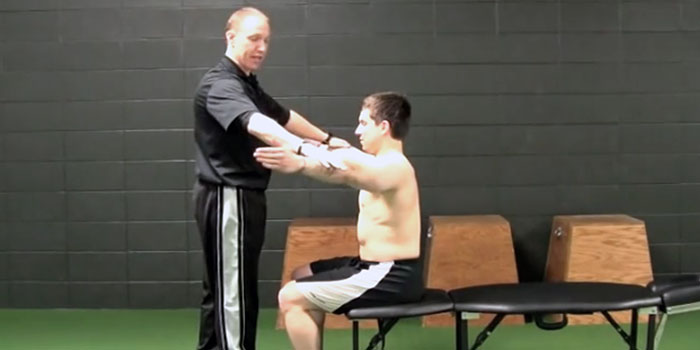
Functional Movement Screens (FMS) were popular before functional movement ever became a trending hashtag. Coaches have been implementing the FMS for years, searching for incongruences and vulnerabilities in their athletes. A standard FMS consists of the following tests:
- Hurdle Step
- In-Line Lunge
- Shoulder Mobility
- Active Straight Leg Raise
- Trunk Stability Push Up
- Rotational Ability
- Active Impingement
- Spinal Extension
- Spinal Flexion
There’s still plenty of debate regarding whether or not the FMS is a worthwhile method. A Philadelphia-based sports blog, Sports Doc, decided to look into this, and came up with several conclusive thoughts:
Reliability
There are numerous studies looking at the reliability of the FMS screen with varying results. Overall, the studies show good to excellent intrarater reliability (the same assessor) for both experienced and novice assessors. There is generally fair to good interrater reliability (between assessors) in most published studies as well.
…
Movement Dysfunction
A study by Frost in the Journal of Strength and Conditioning Research from 2013 questions the ability of the FMS to assess dysfunction. They looked at 21 firefighters who initially performed a standard screen followed by a repeat screen 5 minutes later. The participants were provided with a verbal description of the grading criteria immediately before performing each task during the second screen. All firefighters improved their scores within minutes of being told what movement patterns were required. The authors conclude that it may be inappropriate to assume that movement patterns are the direct result of a specific “dysfunction” or “impairment” that could be rectified via “corrective” exercise.
…
Injury risk
Keisel has published two studies involving NFL players showing that a total score of less than 14 or an asymmetry on any of the bilateral tests place players at a higher risk of injury. Players’ having both a total score of less than 14 and one or more asymmetries are at an even greater risk of injury. Lisman published in the journal Medicine & Science in Sports & Exercise in 2013 that military recruits who had a 3 mile run time less than 20.5 minutes and scored less than 14 on the FMS were 4.2 times more likely to experience an injury. These two studies support an overall score of 14 as the cut off for increased injury risk.
…
Sports Performance
A 2011 study by Parchmann in the Journal of Strength and Conditioning Research found that there were no significant correlations between the FMS and on the field sports performance tests whereas the 1 rep max back squat showed a significant correlation to these field tests. Lockie in the Journal of Strength and Conditioning Research in 2015 found few significant correlations between FMS scores and multidirectional speed and jumping tests. Lastly, Okada published in the Journal of Strength and Conditioning Research in 2011 that core stability and the FMS are not strong predictors of sports performance.
This isn't a definitive answer regarding the usefulness of the FMS, but it's a start. The rest of the article can be found on Philly.com, here.








